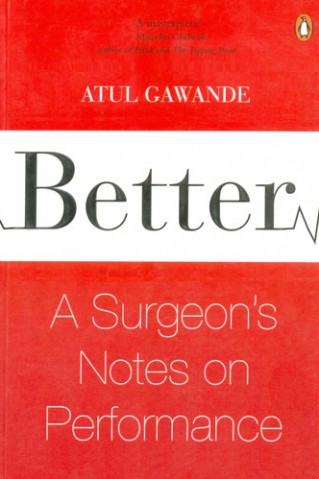Publishers Weekly Talks with Atul Gawande:
In the Belly of the Medical Machine, February 12, 2007
You did a bit more legwork on this book than for your first Collection, Complications.
The skeleton of Complications was my own training as a surgeon. In Better, I’m trying to examine all the gaps involved in what we do. I wanted to show how situations of risk really work, how people in different situations grapple with that. I had to go out and see it. That also meant travelling to more unusual places. I wanted to see what it is like to respond to an outbreak of polio in India.
How many of your patients know you have this other identity as a writer?
Only a small minority, I think. I do cancer surgery primarily, so by the time [the patients] get to me, they’re scared, they have other things on their minds. [The patients] are thinking, how well can this guy operate?
Are you describing inherent problems in medicine?
Science has brought us thousands of things we can do–and each is very complicated, and most of it resides in the heads of many different people. We’re confronted with the complexity of society now, and the experience of actually dealing with it is painful. We’re in the machine. All we can do is try to think in morally clear terms about our goals and try to be creative.
Tell us something about the medical system that people don’t know.
There are huge examples of how we’ve been able to change our lives. A good example is [Dr.] Virginia Apgar. Here’s a woman confronting a situation where losing a child in childbirth was a common experience. And just by inventing a simple score [in 1952], she spurred hundreds of little changes that made a huge difference.
Our standards have changed, and we’re able to do so much that we look at increased health care for all as a big crisis.
Yes. And you need the machine, too. But the experience of it feels like a disaster every day. I work in a bureaucracy with 10,000 employees. Functioning in such a world is not all that pleasant. But there are things that you can do only if you are in such an organization. So you just need to find the patterns of what has worked. Like Warren Warwick, of Fairview University Children’s Hospital in Minnesota–he’s a great example. He lives in the machine. Through sheer force of will and creativity, he makes it work–and the patients in his clinic live longer than in any other cystic fibrosis clinic in the country. It’s stunning. It’s inspiring.





